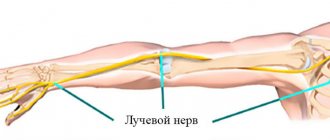1.3.1 You need to start:
FIRST STAGE:
1. Remove the “shell” (psychomuscular clamp). This is done to increase sensitivity. With the right approach, the threshold for suggestibility decreases (suggestion becomes easier).
Removing the “shell”:
a) you can simply shake your shoulders, knead your shoulders, with the suggestion to “relax as much as possible, trust completely.”
b) sit him on a chair, shake the suggested person’s hands, suggest that he relax them like whips and not offer the slightest resistance.
Examination:
a) shaking the brush several times, release it so that it falls on the knees or thigh of the suggestible person, then let go of the brush again, but deliberately past the knees, so that it hangs: if the suggestible person does not relax, then his hand will not fall limply, but will remain suspended or falls too slowly, which means you need to continue relaxing.
b) another way to check the “shell”:
Give the task: “Place the palm of your left hand on the vertical index finger of your right hand.”
Give the task: “Relax your left hand.”
After a while, give the command: “Sharply remove your right hand.”
If the left hand remains suspended, then the suggestible person has not relaxed well. The hand should fall limply.
SECOND STAGE: (Removing the filter of consciousness, instilling trust.)
The main thing when inspiring is to inspire trust.
It is necessary to force the suggestible to feel with aggravation, to divert the attention of his consciousness, to transfer the attention of consciousness to the area of sensations.
To do this, you need to do the following with the suggestible person:
1. Make him put the zeros together, close his eyes, give him the task of relaxing as much as possible.
2. On both sides of the back, bring your hands to his head in the ear area at a distance of 5-10 cm. By force of will, cause a flow of heat from the tips of your fingers and palms until you feel a tingling sensation in your palms (the sensation is similar to electrophoresis, there may be other individual sensations) .
3. Instruct your partner: “Focus your attention on the sensations in the head area.”
4. Ask how he feels. Answer: “Feeling of warmth.” Say: “Now the feeling of warmth will intensify.” Move your palm to your partner's forehead. The sensitivity of the forehead is higher, so he will immediately feel an increase in warmth, i.e., he will receive reinforcement of words with action.
Some suggestibles feel a tingling sensation instead of warmth or begin to lose balance. Some are surprised to discover that when they raise their hands to their ears, the timbre of the voice and the usual sounds that can be heard at that moment changes. You must definitely ask: “How do you feel?” If your partner talks about some kind of tingling or something else, for example: “It’s pulling back,” you need to say: “That’s right, now it’s going to pull even harder.” If he says that the sound has somehow changed, you need to say: “That’s right, that’s how it should be.”
This is the most important moment of penetration into the subconscious.
This is the most important moment of penetration into the subconscious. You need to closely monitor your partner and reinforce him. reinforce his feelings with words.
All the power lies in backing words with action!
Example: You noticed that he had a tear. React immediately. Say: “Now you will have a tear,” etc. This is how faith is consolidated on an unconscious level (in the subconscious).
As words are reinforced by action, the threshold for suggestibility decreases. The information you give must be reliable and always supported. The willpower of the suggestible person does not matter.
THIRD STAGE
You need to say (i.e. give an instruction): “Now I will count to three, and you will slowly be pulled back.”
Moving your hands along your head, pull your head towards you with your palms (without touching your head with your hands). Stand back.
As a rule, a person immediately begins to lose balance and fall backward.
At the same time as you do these actions, say:
"One two Three! You are being pulled back! You are Falling! You're falling! You're falling! You're falling! You're falling! You need to speak with emphasis and without pause, increasing your persistence with each word so as not to turn on your consciousness. Then you need to say: “Enough, now you are being pulled forward” and pull forward with your hands. Then do the same thing back, and so on several times. This is a test of suggestibility, and it is also a powerful reinforcement by action.
Special cases: You pull forward, but it falls to the side. You need to say: “You are being pulled to the side.”
If it falls too well, you need to ask: “What did you feel? Are you being pulled back? (maybe he's just pretending). Say: “Try to resist, I will pull you back. As soon as I say: “Three,” you will fall back, but try not to fall.” As soon as you are convinced that your subject has passed the suggestibility test and is responding to your palms, it means that his subconscious has already responded to your manipulations and, regardless of the consciousness and will of your subject, a still fragile connection has arisen between you and his subconscious.
Let him open his eyes now. The next stage is coming.
FOURTH STAGE (METHODOLOGY)
You need to speak in a curt tone, in a commanding tone, and speak while looking into the eyes.
Under no circumstances should you say something like, “Let’s try.” This phrase simply personifies your lack of confidence in your abilities.
Standing facing each other, instruct the suggestible person:
“I need to check your nervous system. I want to test your sensitivity. The higher your sensitivity, the better. Relax, stand and listen.
- Trust me completely - Relax - Place your hands in front of you, fingers wider - Fingers as wide as possible - Tension in your hands. Fingers are like nails (do not press your elbows to your body) - Look into my right eye (while looking at the bridge of your nose) - Your hands, like two opposite magnets, begin to attract each other - The tension in your hands is growing - Your hands are attracted stronger and stronger - You you feel the tension in your hands growing - Hands are getting closer! They're getting closer! They're getting closer! (make passes around your hands up and down, warming them with the strong-willed warmth of your palms, looking into your eyes) - Your fingers are like nails - Your palms and fingers are like solid metal - Your hands are coming closer - Tension in your hands! - Fingers bend back! - Now I will count to three, and your hands will come closer - One. (In a normal soft voice) Fingers like nails - Two. (In a firm, ordinary voice) - The tension is growing, look at your hands. - Three!!! (Shout out and continue speaking without pause). - You see how your hands are getting closer (without a pause) - Your fingers are like nails!!! - Hands are numb! - Your hands are getting closer! They're getting closer! - They're getting closer! They're getting closer! (At the same time, passes are made over the hands from the back). -Your fingers are like nails! (Speak without pause, not allowing consciousness to turn on:) - Fingers are numb! - Fingers bend back! -Your fingers are like nails! - Your fingers are like solid metal! “You won’t be able to clench your fingers into a fist!” - Try it!!! And immediately shout out without the slightest pause:
- You see!!! - Your hands obey only my commands!!! - My words affect you!!! - My words penetrate your brain!!! - I completely control you!!! “Your hands are getting closer, closer, closer!” - Your fingers are clenched into a lock! “The fingers are clenching tighter and tighter!” “You won’t be able to open your hands until I give you permission!” You can almost shout these words too, with emphasis on the words “you can’t.” - You are unable to unclasp your hands! - Once! Two! Three! Then, without pausing, shout out: “Try it!”
If you maintained the intonation correctly, did not change the order of words and did everything as it should, then you can do whatever you want with the subject.
He will discover with the greatest surprise that he cannot unclasp his hands. He completely obeys you. Now you can safely experiment.
Techniques and methods of hypnosis
Hypnotizing is easy, but not always safe. Thus, instant hypnosis can be considered a powerful weapon. But not always even good deeds can lead to what was planned in advance. Therefore, when turning to a person who knows hypnosis or its techniques, it is better not to take risks - not to bring a person to a state of mental trauma that may arise during the process of hypnosis. Such cases are rare, but can still happen.
There are many theories of hypnosis, without any satisfactory results or definitions, but there is no theory that explains and describes absolutely all aspects of hypnosis.
Many people believe that hypnosis is a mystery and an art. Experts believe that each hypnosis session must be planned carefully. Improvisation is good in the theater, but not in the studio. During hypnosis, the mind is more receptive to suggestion and new ideas and this can replace a person's beliefs and behavior.
Each person is different from the other, and his uniqueness is manifested even in the behavior of the hypnotized. That is why specialists, before conducting hypnosis sessions, choose approaches and methods that are different for each person. Hypnosis is not a key that opens all doors, it is a kind of master key that can adapt to any lock. This is how the hypnotist chooses a method based on the client's problem.
Each hypnotist uses his own methods, which he learned from other specialists, studied theory, practice and implemented over many years, experimented, changed, adapting to his personality and his capabilities. All this provokes the emergence of new methods and different systems that actually fit into a small number of techniques.
Hypnosis techniques are chosen depending on the nature of the problem, the ability of the hypnotic subject and the knowledge of hypnosis. A good hypnotist differs from a bad one in that a professional is able to use the character and characteristics of the client without trying to force him to work at any cost.
The client’s participation and consent is very important, because otherwise the specialist will not get the desired result. In order to obtain satisfactory results, very often just a light or medium trance is needed. But some of these techniques can be used more effectively when the client is in a deep trance state. Otherwise they have no effect.
Assessing the client's condition before the session is a prerequisite. Every hypnotist must know exactly what state the client is in if he wants to get results from his work. If it turns out that there are no prerequisites for hypnosis, therefore, a session of a hypnotic state is impossible.
So, let's try to consider the most well-known methods and techniques of hypnosis:
Hypnotic relaxation method
This is a fairly simple technique that is usually used at the beginning of hypnosis. A session can last from twenty to forty minutes. It all depends on how quickly you can immerse the patient in a state of hypnosis.
The hypnologist begins the session by talking to the client in a very pleasant, calm rhythm, thereby helping the person to relax. What the hypnologist says is of relative importance, since it simply helps to understand and realize the reactions of the subject. If the client reacts, the specialist uses this in further work to strengthen the suggestion.
After relaxation, the hypnologist continues to focus on breathing. Observes how a person reacts and breathes. The session continues, the hypnologist invites the person to relax, trying to speak in rhythm with each breath and puts the hypnotized person into a trance. After this, the person must close his eyes. The hypnologist then asks the client to count from the largest number to the smallest. For example, from twenty to one.
For this technique, hypnologists often use visualization to describe a pleasant scenario that will help the person relax more quickly and enter a state of hypnosis.
Self-hypnosis
This is nothing more than a form of self-induced hypnosis. These methods are based more on the same concept, that is, focusing on one idea, word or image.
Dr. Herbert Benson, in his book Relaxation Response, emphasizes how the state of relaxation is based on focusing attention on one idea - to enter a state of self-induced trance. There are also several induction methods for self-hypnosis.
This method includes several steps:
• Select an object of concentration.
• Close your eyes and concentrate.
• Relax your muscles and focus on your breathing.
• Think in silence about the selected object.
• Continue this for about ten to twenty minutes.
• If the object of meditation is lost, you should try to return your thoughts and concentrate on it.
Technique of suggestion in a dream
The result of this hypnosis method is quite effective. In a state of sleep, a person perceives speech unconsciously; many people treat spoken words as if they were having a dream. Therefore, this method of suggestion is one of the most effective. The technique consists of whispering special words or phrases to a sleeping person. This method consists of several stages:
• The first stage is adjustment to the sleeping person. The hypnologist sits at the head of the sleeping person, touches the client’s fingers and tries not to wake him up. Next, he begins to pronounce a speech that follows the rhythm of the sleeping person’s breathing.
• The second stage is checking the sleeping person. The hypnologist's speech is slow, quiet and soothing.
• The third stage - words are spoken that need to be conveyed to the client.
Such sessions are carried out at night, in the first fifteen to forty-five minutes of sleep.
Suggestion of thoughts from photographs
This is another effective technique. Hypnosis is carried out while being at a sufficient distance from the client. To do this, the hypnologist, as if calling an object in his mind, tries to hold it. The hypnologist looks at the client’s photo and pronounces certain phrases and commands.
Nonverbal hypnosis techniques
This technique is based on the transmission of phrases using gestures, touches, to a person, a subject. In this case, the session is carried out in silence; during the process of hypnosis there should be no sounds, noises, ticking of a clock or metronome.
Mechanical
These techniques use instruments specially made for this purpose. One of them is a spiral-shaped pinwheel. Others may include the ticking of a clock or metronome.
Instant hypnosis method
This method uses auditory stimuli that act as hypnotics.
The visual impression, the impression of sound, acts like the monotonous tone of a hypnotist. Similar irritants include: clocks, bells, feng shui sticks.
Fixation of gaze
Also applies to methods of instant hypnosis. The hypnotist, sitting opposite the patient, presses on his fingers, puts strong pressure on his wrists, while looking intently into his eyes. Within a few minutes the person falls into a sleepy state.
Direct offers
In conversational hypnosis, a direct sentence is an explicit command to perform a specific action. Although this is quite a powerful method, many consider it unethical, because during the session the hypnologist has a certain power, and the client does not control himself and his behavior during the session.
Here are some classic direct sentences that are often used to treat obesity, bad habits and other conditions:
• "Are you going to sleep";
• “You will stop smoking”;
• “You will lose weight.”
"Levitation"
This is the classic Ericksonian method of hypnosis. The session begins with the hypnologist closing the client’s eyes and putting the patient into a deep trance. The person seems to go numb and cannot feel his arms and legs. But at the same time he must describe his feelings. The client enters a trance and may physically raise his hand or simply believe that he feels that he has raised his hand. This type of hypnosis is educational because it helps the hypnotist convince the client of the power of his action.
Reorientation
This method helps return a person to a state of wakefulness. The hypnologist counts from one to three, or from one to five, and after that the person opens his eyes. This type of session works well for those who have problems falling asleep. The process of immersion in a hypnotic state is carried out while lying down or sitting on a chair with armrests.
Sudden impact/fall backwards
This method is similar to the handshake technique. A subject who is in shock may enter a trance. Erickson once demonstrated this by stepping on a woman's foot. The sensation of falling backwards is so shocking to the client that it opens the mind to suggestion.
Swish pattern
This is a hypnosis technique that is used in neuro-linguistic programming (NLP). Allows you to kind of control a person and give him certain commands to carry out. For this purpose, five senses are used, which relate to modalities (taste, smell, vision, touch, hearing). The submodality is a subset of these feelings. Here are some examples of submodalities:
• Bright or dim?
• Big or small?
• Color or black and white?
• Loud or soft sounds?
The Swish pattern is a technique that starts with visualization. Once the client is in trance, the hypnotist will identify one or two submodalities (brightness, size, etc.). The unwanted action is large, focused and bright in the foreground, while the desired action is visualized as small and dim in the background. The moment you say “Swish” (the method's namesake), the desired image quickly becomes bright and big in the client's mind.
Betty Erickson's 3-2-1 technique
Betty Erickson was the wife of Milton Erickson. She developed her own method of self-hypnosis known as the 3-2-1 technique.
This method refers to self-hypnosis. The session begins with open eyes. A person needs to pay attention to 3 things in the room that he can see, hear or feel. For example, the client may see a painting on the wall, table or clock. Hear the birds outside the window, the hum of the refrigerator, the clock ticking. The session is repeated until the person fixes his attention on two details, trying to distance himself from the noise happening around him, after which only one detail remains (hence, the countdown is 3-2-1). Then the person closes his eyes and starts over, visualizing three objects. After this, a new countdown begins. Once the client reaches the last point, he will enter a trance.










